By Mike Darwin
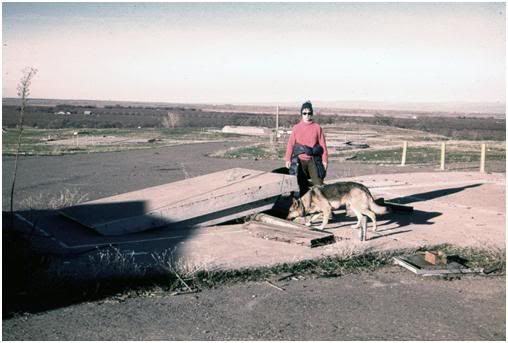 Figure 11: Linda Chamberlain (and dog Terra) stands next to the emergency entry/egress site of the Titan 1 missile site near Yuba City, CA.
Figure 11: Linda Chamberlain (and dog Terra) stands next to the emergency entry/egress site of the Titan 1 missile site near Yuba City, CA.
We spent 2 days at Titan 1 Base # 1, which was attached to Beale Air Force Base (Marysville, CA) and located 15 miles northwest of Yuba City and 9 miles west of Live Oak, California. We stayed in a cabover camper perched on a Ford F-450 pick-up truck on the surface, not far from the personnel entrance to the facility, next to which Linda Chamberlain can be seen standing in the photo aboce (Figure 11).
The complex was originally surrounded by both a barbed wire topped chain link and a high voltage electrified fence, and access was via a single paved road, which terminated at a guardhouse. The crew housing and vehicle bays had been demolished by the time we arrived, however the guard post building was still in place. The underground facilities were entered by a hydraulically lifted “personnel door” which can be seen in the photograph above (Figure11). The hydraulic mechanism had been removed by the salvage crew, and the massive entry door was propped open with wooden beams. Linda Chamberlain is seen standing next to the entrance while Terra (the dog) sniffs the cool, hydrocarbon scented air that was exiting the entrance.
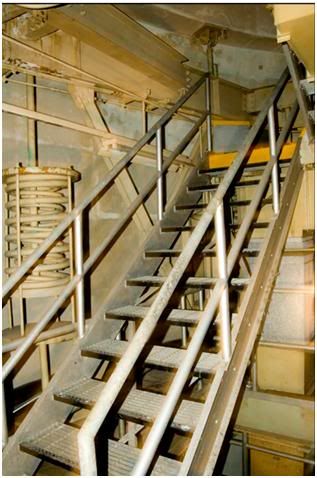
Figure 12: The steel staircase in the entry way was supported by a metal superstructure that was cushioned by large, shock absorbing springs designed to protect the staircase, and any people on it, from damage or injury in the event of a nuclear blast.
A winding flight of steel stairs took us from just below ground level, down perhaps 15-20 meters, to a sublevel that was equipped with air-lock configured blast doors. The sub level floor was supported by large shock absorbers, one of which can be seen at left, in the photo above.
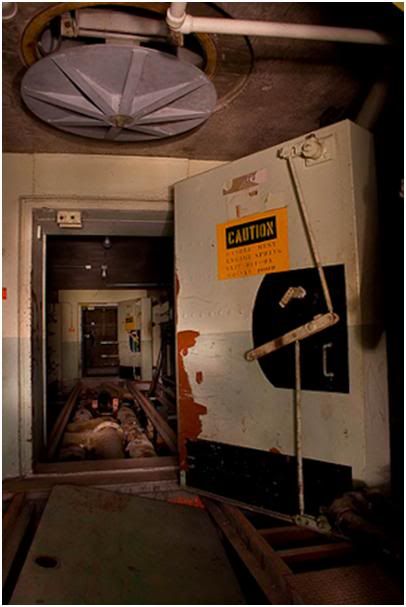
Figure 13: In the foreground and background two of the massive blast doors that guarded the personnel entryway intio the complex.
The blast doors were so massive that it is hard to imagine they could be operated by any less than a couple of men; and yes, they were operated manually. The circular mechanism at the top of the photo above was an overpressure valve which would be closed by the onrush of air in the event of a nuclear blast. As can be seen below, the main connecting tunnels were quite large.

Figure 14: Junction between three of the connecting passages in the missile site. The red metal framework was originally covered heavy gauge steel-plate flooring. This metal decking was easy to salvage and was removed by salvage contractors after the site was decommissioned in 1965. The structures hanging from the ceiling originally supported plumbing and electrical cables.
The red (corrosion inhibitor) coated metal framework on the “floor” was the support structure for thousands of square feet of heavy steel plate decking. This valuable and easily accessible metal had been removed by the salvage contractor. Walking about in the facility, which was pitch dark, was both hazardous, and psychologically as well as physically draining. This was even more the case in the many areas where seeping rainwater had accumulated – often to near the top of the deck support framework.
The air was permeated with dust, and wads of asbestos hung from the ceilings in many places, or were present as snowy looking mounds of fibers at intervals on the floor. The sweetish odor wafting from the various vents and entrances was the residue of the RP-1which had escaped when the tanks and plumbing that originally contained it were salvaged. RP-1 had leaked into the soil, and where the soil spilled into the tunnels from the holes where the storage tanks once were, the molecules slowly leached into the air. In short, the environment was a cytotoxic and carcinogenic death trap through which we wandered with abandon. Both Fred and I had spelunking experience, so we were not intimidated by the darkness or the tricky footing, but it was difficult, unpredictable and dangerous terrain, and in contrast to caves, there was the added hazard of razor sharp projections of metal, and occasionally, human fecal matter to contend with.
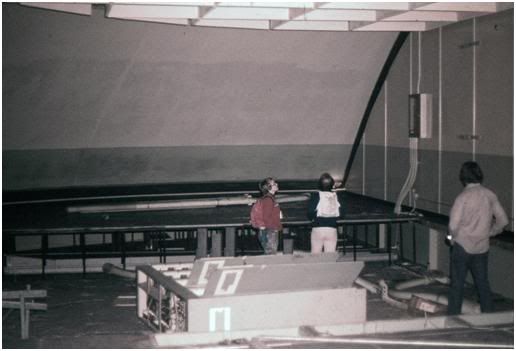
Figure 15:Left to right above, Linda Chamberlain, Fred Chamberlain and Sarge Mc Clintock, in the Control Room of Titan-1 base #1, attached to Beale Air Force Base and located 15 miles NW Yuba City and 9 miles W Live Oak, California.
It is simply impossible to communicate the scale of the place. We humans can build large, and I have been in Grand Central Station, and Madison Square Garden, as well as various super-sized sports arenas. Nevertheless, there is something uniquely impressive about a structure of this size buried 30 stories beneath the earth with a suspended floor cantilevered and spring mounted to withstand a high megaton blast at up to 100 psi of overpressure. Some of our party can be seen in one of the control/command rooms in Figure 15, above. The arch of the concrete dome can be seen in the background.
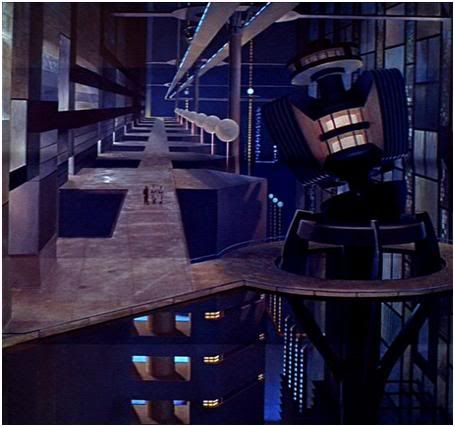
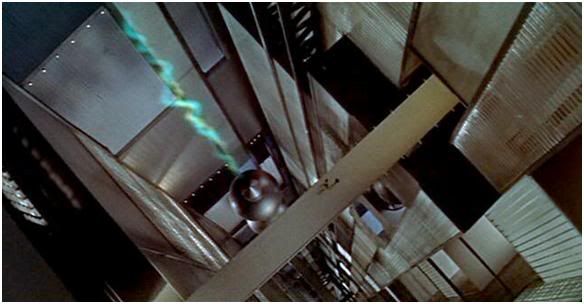
Figure 16: Human figures are dwarfed by the gigantic proportions of the autonomous, self-maintaining machinery of the of the vanished race of the Krell in the 1956 science fiction film, Forbidden Planet. The Titan-1 site inspired a similar feeling of grandiosity of scale when I visited it in 1974.
If the Powerhouse and Control domes were impressive, they were dwarfed by the overawing massiveness of the missile and antenna silos. There is no experience I have had before, or in the 37 years since, that even remotely approaches the immensity of the scale of the engineering in that Titan site. I sincerely believe the Grand Canyon is nothing more than a big ditch when compared to the view you confront standing in the opening into the Titan silo that you see below. The closest I can come to communicating the experience is to refer to the scene in the classic 1956 science fiction movie Forbidden Planet, where Dr. Morbius shows the 23rd century crew of earth’s United Planets Cruiser C57-D, the machinery of the Krell, a race of beings who had constructed a subterranean, self maintaining technology on a truly fantastic scale which, incidentally, was also the instrument of their annihilation. As the the humans enter the Krell machinery in the film, they appear as ants inside the massive structure which is, we are told, “a cube a mile on a side.”
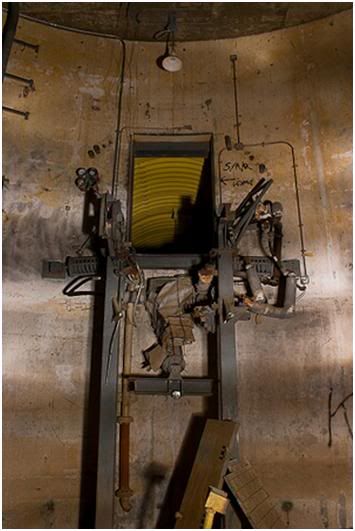
Figure 17: The illumination present in this photograph (left) is misleading; an artifact of xenon flash photography. The corridors and chambers of the Titan-1 site were illuminated only by carbide lamp and flashlight and it was disturbing, disorienting and dangerous to approach an area where the floor vanished and a vast, black chasm opened up at our feet.
In darkness, we instinctively look down to secure our footing, and when at last we discerned an end to the floor and to our footing, and we shined our lights into the blackness that loomed ahead, what was to be seen was an enormous chasm of space stretching away, seemingly endlessly, terminating in a mirror-black circle of water that gave the appearance of being thousands of meters below our feet (Figure 25). [The deep pool of water had accumulated as a consequence of the ingress of rainwater through the deteriorating cover of the silo].
Everything was on a colossal scale. I can be seen in the photo below, standing in the doorway to a gutted area of the upper level of the control dome. One of the bolts protruding from the concrete at the lower left of the photo above is easily the diameter of a human arm. To move about in such titanic man made spaces is to feel as a citizen of Lillliput transported to Gulliver’s world. I think part of this feeling of being dwarfed and overawed, must have resulted from the absence of any “natural” or terrestrial scales of reference. You are surrounded only by made things, and they are things made on a colossal scale; there are no windows, no trees, no sky; nothing to provide a referential scale.
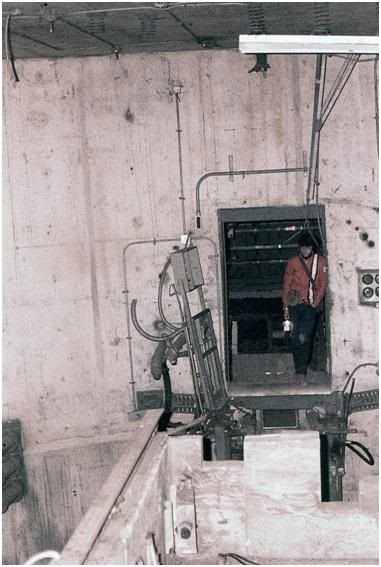
Figure 18: The author leaning against a doorway into a heavily salvaged area of the Control Room.
Light bulb and battery technology in the mid-1970′s were, by comparison to today’s bright and efficient LED’s and alkaline cells, crude and unsatisfactory. We made our way through the tunnels using the light of carbide lamps of the kind then used by miners and spelunkers. These lamps were fueled by chips of calcium carbide, which were placed in a small metal pressure vessel, to which water was added. The water reacts with the carbide to produce acetylene, which is then burned to produce a flame in front a parabolic reflector. This apparatus, worn on the forehead and secured in place with a head band, was our primary source of light. Short lived, costly, and heavy dry cell batteries were reserved for use when we were “in situ” and wished to explore a large space more completely and at greater leisure. The compact xenon camera flash was a comparatively new invention in 1974, and was what was used to illuminate large spaces sufficiently well to permit photography.
Toxic dust covered every surface, and passageways and machinery were not infrequently defaced with graffiti. The underground warrens of the site attracted not only the restless youth of the area, but also a more serious criminal element, which found the site to be a congenial place for drug fueled partying.
The warren of tunnels seemed endless and it was easily possible to get lost. Fred Chamberlain’s engineering background coupled with his meticulous personality was essential in keeping us on track and out of harm’s way. Unlike the locals, we did not have the luxury of exploring this vast space in increments, being careful to learn our way into the subterranean abyss a little at a time over many visits. The graffiti proved useful in helping us navigate our way, since it provided distinctive landmarks on what was otherwise an alien and thoroughly uniform landscape. The absence of the steel plate floor decking meant that we had to “tightrope” walk along the exposed superstructure of the tunnel floors; an additional source of fatigue and anxiety, since a misstep could mean a potentially seriously injuring fall of a meter or more, often on to sharp or jagged pieces of projecting metal.
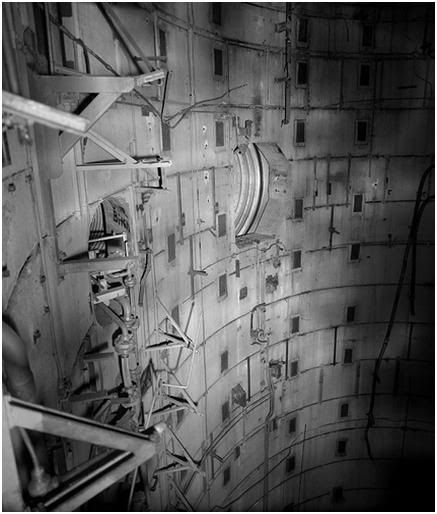
Figure 18: A close look at the photo above reveals that there are two openings into the silo; one at top center, and a smaller one to the left it. The smaller of the two tunnel openings is approximately 2 meters high and is one in which a man can easily stand.
Something of the scale of the silo that housed the Titan missile can perhaps be grasped if you realize that the smaller opening at left in the photo above is a little over 2 meters high. A man standing in that opening and gazing out into the immensity of the silo, decorated as it was with piping the size of a his thigh, and cabling the diameter of his arms, would likely feel as a mouse would, peeping into a concrete grain silo from the vantage of a pipe some good way towards the top of the structure.
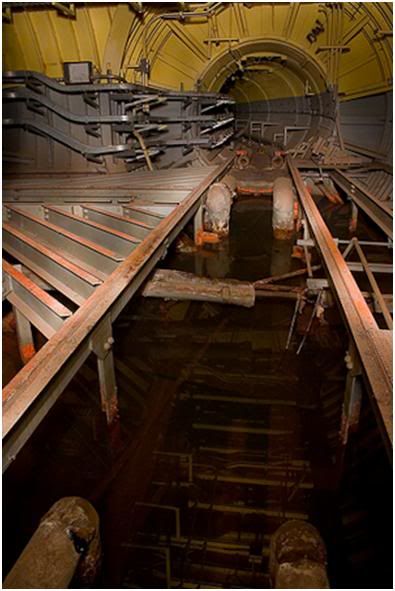
Figure 19: It was necessary to tightrope walk on the superstructure that once supported floor decking over large, sometimes deep pools of rainwater seep that had accumulated over the years in the lower areas of the complex. These water filled voids often contained jagged and sharp pieces of metal which made the risk of injury from a misstep substantially greater.
Deep and dangerous voids filled with seep-water would open up at our feet without warning. These were not benign pools of water, but rather were ice cold wells of black water filled with sharp and jagged metal supports covered with rust and corrosion. These hazardous ponds had to be negotiated by “walking the plank” of the girders that once supported the metal decking that comprised the floor.
Tunnels often opened unexpectedly into silos or other large spaces where the floor disappeared without warning and a misstep could end in sudden death, or at very least, in serious injury.

Figure 20: Concrete flooring and graffiti made navigation through the complex a bit easier in some areas.
In a few areas there was concrete flooring, but in most the decking had been salvaged and it was necessary to pick our away perilously along the steel structural members that remained.
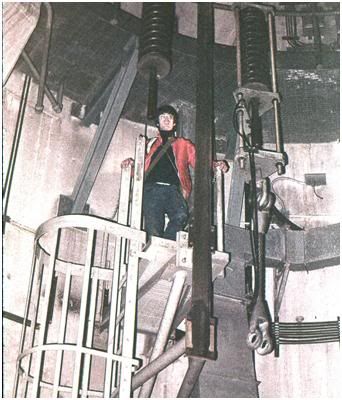
Figure 21: Having climbed up one of the few remaining caged ladders in the complex, I stand below two massive shock absorbing springs in one of the antenna silos.
At left and below are a few pictures, including one of me perched on the side of one of the antenna silos. They may provide some additional reference and feeling for the environment, and for the scale of the engineering. We were young then, and perhaps more than a little foolish. I continued to wear the red jacket in these pictures, a promotional giveaway from the Marlborough cigarette company, for a number of years after our adventure into the Titan site, washing it only once before it finally wore out and was discarded. Had I smoked one of Marlboro’s tobacco products, as well as inhaled the asbestos in the Titan site, I might not be here to write these words now.
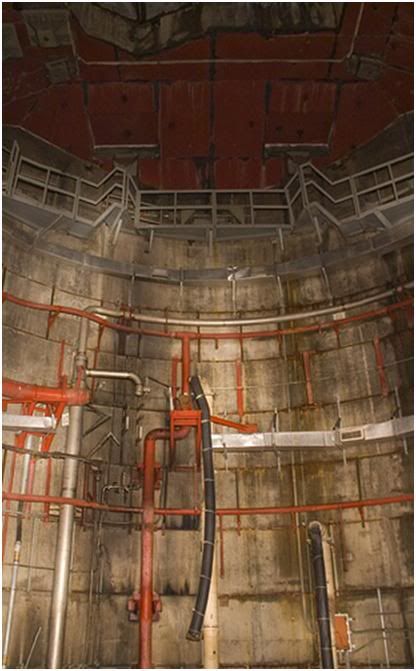
Figure 22: The massive 125 ton doors of one of the three missile silos and a single remaining tier of the cat walk that once ringed the silo.
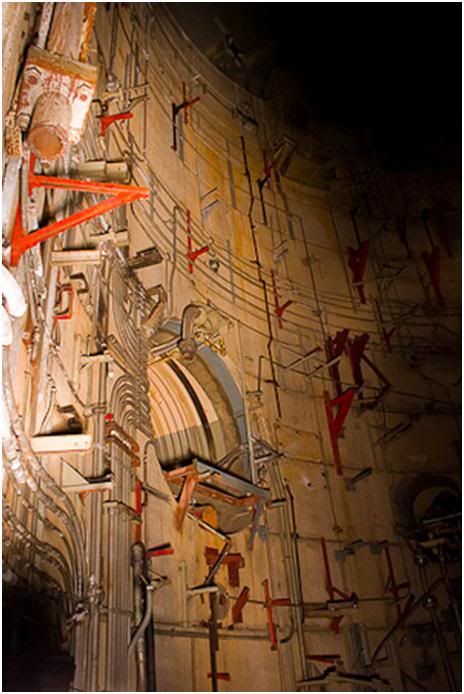
Figure 23: Myriads of metal supports project from the walls of one of the missile silos. Scattered remains of electrical conduit and cable trough supports are visible everwhere.
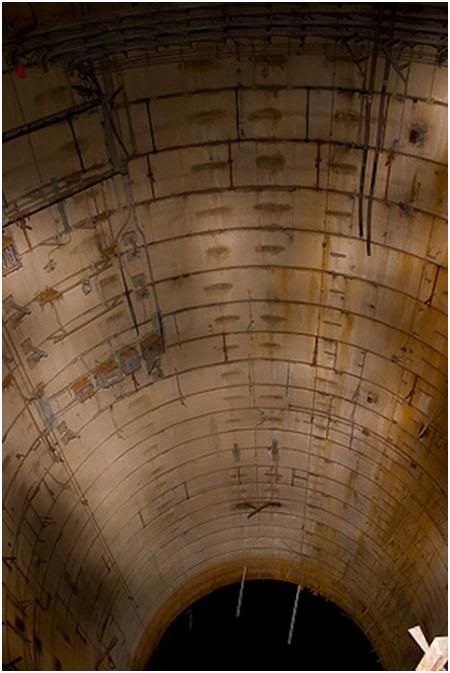
Figure 25: The bottom of the well; a black pool of seep water had collected at the bottom of all three missile silos. The brown stains on the concrete along the side of the silo are a result of rainwater seepage through the doors at the top of the silo. The brown ring of stain at the bottom of the silo shows the degree to which the water level varies from time to time.
End of Part 2

Mike, for what it’s worth, I am enjoying the tour. Some of these pictures look to me like a trip through the Death Star.
But that is exactly what it was, a trip through a Death Star, one of many of this type that existed until 1965. They were replaced by Titan II silos, which were more compact because by then, on-board inertial guidance had been perfected eliminating the need for the antenna silos and the rockets no longer required fueling immediately pre-launch, because the LOX-kerosene propellant had been replaced by the highly efficient hypergolic asymmetrical dimethylhydrazine (Aerozine-50) and nitrogen tetroxide (oxidizer) propellant (which ignite on contact with each other). This hypergolic fuel system not only provided superior specific impulse, it eliminated the need for LOX as the oxidizer – and thus the massive subterranean infrastructure required to produce the LOX. No more massive liquefaction and power generating infrastructure greatly simplified the facilities and cut launch time to a few minutes. The Titan II sites are far, far less impressive feats of mega-engineering. They operated until ~ 1981, and in fact, if you ever make the journey to Alcor, there is an “intact” Titan II site open to the public near Tuscon, AZ. Titan II ICBM Site 571-7 is located at 1580 West Duval Mine Road, Sahuarita, Arizona which is ~ 15 miles south of Tucson. It is now a museum run by the nonprofit Arizona Aerospace Foundation, which includes an inert Titan II intercontinental ballistic missile in the silo, as well as the original launch facilities, minus a fair bit of the launch control electronics. I’ve been there and found it a worthwhile visit – albeit nothing on the scale of the Titan I site.
The Titans co-existed with the Minuteman solid fuel missiles for quite some time, mostly due to the fact that they were a good design, the money had been spent, and the Minuteman missiles weren’t exactly cheap to deploy, either. As an interesting aside, if you go to http://chronopause.com/index.php/2011/03/18/letter-to-aspiring-cryonicists/ and look at the photos of the Alcor van/perfusion room, circa 1975 (about halfway through the post), there are two unusual, desk-type electronics panel racks barely visible towards the far end of the perfusion room (adjacent to the driver’s compartment). In one of the photos Fred Chamberlain IV can be seen sitting in front of one of them. Those racks were used in a Minuteman silo that was decommissioned. So, death and life, the end to the species and the quest for its indefinite continuance, have been intertwined since at least 1973.
Finally, it’s also important to remember that these delivery systems were and remain only a small (and increasingly irrelevant) part of the thermonuclear arsenal. At the time of the Titans, there were B-52s and cruise missiles, as well as Jupiter missiles in Europe. Submarine launched Polaris missiles now constitute the most difficult to neutralize nuclear weapon system. In fact, the US and Russia are the only two nation-states that still have silo-based nuclear capability. I’ve heard rumors of massive subterranean construction, on the scale of 4-5 times that of the CERN accelerator in Geneva, which may represent a fundamentally new kind of weapon system. Who knows? We seem intent, if not doomed, to engineer ourselves towards the fate of the Krell. And what a pity it is that I will not likely live to wander through that iteration of our struggle for self annihilation, it it does indeed exist. — Mike Darwin
As I typed Death Star I was struck by how appropriate the name was, actually.
I read about Titan II silos yesterday, including the museum. I didn’t realize until now that that wasn’t the same as the one you are posting photographs of. I understand there’s a hole in the side of the missile there to demonstrate that it is not armed. I also thought it was interesting that the common conception is these missiles were decommissioned due to a treaty signed by Reagan, but that the real reason was that they were being decommissioned to be replaced with more “modern” means of destruction.
I will quit paying to build this crap just as soon as they let me. I can think of lots better uses for the money.
The MX missile, under development during the 80′s, was supposed to replace the Minute Man missiles. Fortunately, the cold war ended before it was deployed. We are now down to three ICBM launch complexes, with a total of 450 missiles, all Minute Man III’s. All of the Geminis were launched using Titan II rockets.
I have not heard any rumors about this new underground complex. If true, its probably an underground governmental command post (you know, for “slate wiper” plagues or something like that) rather than any kind of weapons system. Maybe they’re afraid of all of the home brew DIY biology people.
Or else it just represents more opportunities for crony capitalism, like the fortunes squandered on private contractors in Iraq and Afghanistan.
Yes, this is the most likely explanation of all, if the rumors are true.
It’s probably all that and more!
Thanks for the correction regarding the Titan 1 and the Gemini program; you are correct that it was the Titan IIs that were used. I’ll revise the text of the article accordingly. — Mike Darwin
I’ve heard from one the guys at Hardcastle, and from a former structural engineer at Haliburton, that there is both widespread and large scale government and large corporate construction of hardened habitation sites underway throughout the – much more in toto than even during the height of the cold war. This is supposedly a worldwide phenomenon. Why this is so, I have no idea. I find it particularly peculiar given that the Swiss are decommissioning and selling most of their truly massive underground NBC facilities; with no plans to replace them.
This subterranean building boom started well before the current economic crisis. This construction is independent of the megasites I’ve heard rumors about, which are supposedly very high technology installations. I heard the first rumor from an engineer who had previously worked at CERN. So, who knows what the sneaky devils are up to. In their day, both Los Alamos and the Titan I and II sites were incredible – the stuff of pulp science fiction novels. Both were reflections of fundamental technological advances in offensive weaponry. Both are onto half a century old. The timing is about right for the next big leap forward. I shudder to think what that might be. –Mike Darwin
I’ve heard about the corporate underground building boom as well. This is actually fairly publicized and is probably in tandem with the rise of survivalist mentality in general. I think a lot of these are just hardened data centers. A lot of corporate server farms are being put into these hardened facilities. It makes sense for the companies that can afford it. Fires, earthquakes, tornadoes, and typhoons; all can damage or destroy a server farm. A corporation looses all of its data and it can be out of business for good. Some of it may be fad-driven. Corporate managers seem to be susceptible to fads and fashions these days. Dot-com stocks and sub-prime mortgage bonds being examples of such.
That the Swiss are selling off much of their NBC facilities suggests that they do not believe that there is any real threat. I’ve not heard anything about the really high tech centers you mention.
Of course they were able to build this kind of hardware in the 50′s and early 60′s. Defense spending averaged 9-10% of GDP during this time. It was also the time, particularly during McCarthy period where if any criticized this, they were immediately tagged as a subversive and hounded by the FBI, such that they may be fired from their job or suffer other financial or professional loss. The defense budget ramped down to 3% of GDP in the early 70′s. It went back up to about 4.5% under Reagan, then declined to 1.5% following the end of the cold war.